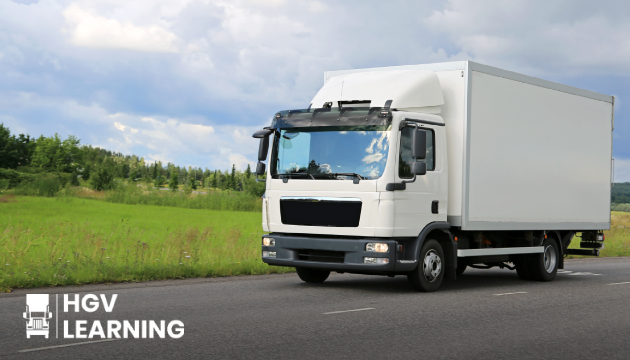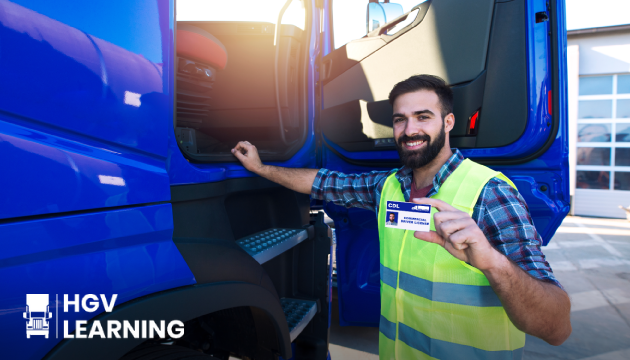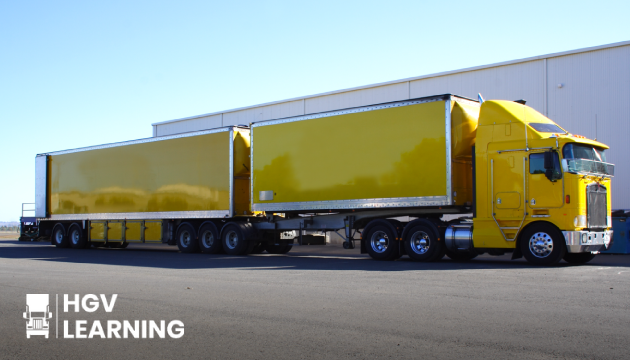Introduction
When it comes to heavy goods vehicles (HGVs), there are several categories, each with its own specific requirements and capabilities. Class 1 HGV is one of the most versatile and widely used classifications in the world of professional driving. In this comprehensive guide, we will dive deep into understanding Class 1 HGV, its significance, and what it takes to operate these powerful machines on the road.
Defining Class 1 HGV (Category C+E)
What is Class 1 HGV (Category C+E)?
Class 1 HGV, often referred to as Category C+E, represents a specific class of heavy goods vehicles used for the transportation of goods exceeding 3,500 kilograms (3.5 tonnes) in gross vehicle weight (GVW). These vehicles are known for their ability to handle substantial loads efficiently. Class 1 HGVs consist of two primary components: the tractor unit (Class C) and the trailer (Class E). The “E” designation signifies that the driver is licensed to operate articulated vehicles, where the tractor unit and trailer are joined with a coupling mechanism.
Class 1 HGVs come in various configurations, including box trailers, flatbeds, tankers, and refrigerated units, among others. Their adaptability and capacity to carry diverse types of cargo make them essential in a wide range of industries, including logistics, manufacturing, and construction.
Key Features of Class 1 HGV:
- Articulated Vehicles: The hallmark feature of Class 1 HGVs is their articulated structure, comprising a powerful tractor unit and a trailer. This design allows for the efficient transport of goods by distributing the weight between the two components. Articulated vehicles are well-suited for both urban and long-distance transportation, making them versatile assets in the logistics sector.
- Higher GVW: Unlike lighter vehicle categories, Class 1 HGVs have a GVW that surpasses 3.5 tonnes, enabling them to transport substantial payloads. This capability is vital for industries that rely on the movement of heavy goods, such as construction materials, bulk cargo, and oversized equipment.
- Driving Complexity: Operating Class 1 HGVs demands a higher level of skill due to their articulated nature and larger dimensions. Drivers must be adept at maneuvering these vehicles safely through diverse road conditions, which can include navigating narrow city streets, handling highway traffic, and executing precise deliveries in industrial areas.
The Significance of Class 1 HGV
Versatility in Transportation:
Class 1 HGVs are veritable workhorses in the world of transportation. Their unparalleled versatility allows them to transport a wide array of goods, making them an indispensable part of the supply chain. These vehicles can handle various cargo types, including but not limited to bulk materials, machinery, consumer goods, and perishables. Whether it’s delivering construction materials to a building site, transporting goods to distribution centers, or moving products across international borders, Class 1 HGVs serve as the backbone of modern logistics.
Their adaptability doesn’t stop at cargo type; Class 1 HGVs are designed to tackle diverse terrains and road conditions. From navigating the bustling streets of urban centers to traversing challenging rural routes, these vehicles can perform reliably under various circumstances. As such, they are a trusted choice for industries reliant on the timely and secure transportation of goods.
Career Opportunities:
For aspiring professional drivers, obtaining a Category C+E license can open doors to a world of career opportunities. The demand for skilled Class 1 HGV drivers remains consistently high across industries such as logistics, manufacturing, and construction. Companies actively seek these drivers due to their ability to handle larger payloads efficiently.
A career as a Class 1 HGV driver offers more than just job security; it provides a chance for personal and professional growth. Many drivers find their roles to be financially rewarding, with competitive salaries that reflect their expertise and responsibilities. Additionally, the nature of the work often allows for a degree of independence and the opportunity to explore different regions and routes.
In summary, the significance of Class 1 HGV extends beyond its transportation capabilities. It plays a pivotal role in ensuring the efficient movement of goods across various industries, contributing to economic growth and consumer satisfaction. Furthermore, for those considering a career in professional driving, the opportunities within this category are abundant, promising both stability and potential for advancement.
Obtaining a Class 1 HGV License
Eligibility Requirements:
Obtaining a Class 1 HGV license (Category C+E) is a significant milestone for aspiring professional drivers. To embark on this journey, individuals must meet specific eligibility requirements:
- Age Requirement: Generally, candidates must be at least 18 years old to apply for a Category C+E license. This age restriction ensures that drivers have reached a level of maturity and responsibility necessary for operating larger, heavier vehicles safely.
- Category C (Class 2) License: As a prerequisite, individuals usually need to hold a Category C license, also known as a Class 2 license. This license allows them to drive rigid goods vehicles (Class C) and serves as a foundation for advancing to Category C+E.
- Medical Examination: A crucial step in the process is undergoing a medical examination to assess one’s physical fitness and health. This examination ensures that drivers are in good condition to take on the responsibilities associated with Class 1 HGV driving.
Training and Testing:
Acquiring a Class 1 HGV license involves a comprehensive training and testing process:
- Theoretical Training: Aspiring Class 1 HGV drivers receive theoretical training that covers essential topics such as road safety, vehicle operation, traffic regulations, health and safety regulations, defensive driving techniques, and environmental impact awareness. This theoretical foundation equips candidates with the knowledge required to make informed decisions while on the road.
- Practical Training: Candidates then engage in practical training, where they gain hands-on experience in operating Class 1 HGVs. This stage of training includes guidance on vehicle handling, coupling and uncoupling trailers, navigating challenging road conditions, and executing safe driving practices.
- Practical Driving Test: The culmination of the training process is a rigorous practical driving test. During this examination, candidates must demonstrate their ability to operate Class 1 HGVs safely and proficiently. Successful completion of this test signifies that a driver is ready to take on the responsibilities of a Category C+E license holder.
Obtaining a Category C+E license is not merely about acquiring a qualification; it’s a commitment to professional growth and road safety. Through the rigorous training and testing process, drivers are prepared to handle the challenges and responsibilities that come with operating these powerful vehicles.
Class 1 HGV in Practice
Vehicle Handling:
Operating a Class 1 HGV demands a high level of skill and precision, particularly due to the articulated nature of these vehicles. Here, we delve into the key aspects of vehicle handling that Class 1 HGV drivers must master:
- Coupling and Uncoupling: An essential skill for Class 1 HGV drivers is the ability to properly couple and uncouple the trailer from the tractor unit. This process involves connecting and disconnecting the coupling mechanism that joins the two components. Precise execution of this procedure ensures a secure connection, essential for safe transportation.
- Handling Tight Corners: Navigating urban environments and tight corners can be challenging with an articulated vehicle. Drivers need to develop techniques for safely negotiating sharp turns and confined spaces, ensuring they don’t obstruct traffic or damage their cargo.
- Managing Increased Length: The length of a Class 1 HGV combination, comprising the tractor unit and trailer, can be significant. Drivers must adapt to this increased length when maneuvering, overtaking, and parking. Maintaining control and spatial awareness is crucial to preventing accidents and collisions.
- Safety Protocols: Class 1 HGV drivers must strictly adhere to safety protocols, including conducting pre-trip inspections, ensuring load securement, and understanding emergency procedures. These measures are vital for the safety of both the driver and other road users.
Legal Responsibilities:
Class 1 HGV drivers must operate within a framework of strict legal regulations and responsibilities:
- Driving Hours: Drivers are subject to regulations governing their driving hours and rest periods. These regulations vary by region but are designed to prevent fatigue-related accidents. Compliance is crucial for driver safety and road safety.
- Load Securing: Ensuring that the cargo is properly secured is a legal obligation. Drivers must use appropriate methods and equipment to prevent shifting, spillage, or damage during transit. Failure to secure cargo adequately can result in accidents, fines, and legal consequences.
- Vehicle Maintenance: Drivers are responsible for the maintenance of their vehicles, ensuring that they are in roadworthy condition. Regular inspections, servicing, and adherence to maintenance schedules are essential to prevent breakdowns and accidents.
In practice, Class 1 HGV drivers take on significant responsibilities. They are not only skilled operators but also guardians of road safety and compliance. Adhering to proper vehicle handling techniques and legal responsibilities is paramount to the safe and efficient operation of Class 1 HGVs.
Responsibilities and Challenges
Cargo Safety:
One of the primary responsibilities of Class 1 HGV drivers is ensuring the safety of their cargo. They must properly load and secure goods to prevent shifting during transit, minimizing the risk of accidents and damage. This meticulous attention to cargo safety contributes to overall road safety.
Long-Haul Travel:
Many Class 1 HGV drivers are involved in long-haul transportation, which comes with unique challenges. They may spend extended periods on the road, away from home. Managing fatigue, adhering to driving hours regulations, and maintaining focus during long journeys are critical aspects of the job.
Industry Impact
Supply Chain Backbone:
Class 1 HGVs serve as the robust backbone of supply chains worldwide. Their pivotal role ensures that goods move efficiently from manufacturing facilities to distribution centers, retailers, and ultimately, consumers. The reliability of Class 1 HGVs is crucial in meeting consumer demands for timely deliveries of a wide range of products, from everyday essentials to specialized equipment.
The smooth flow of goods through the supply chain relies heavily on the efficiency of Class 1 HGV operations. Any disruption or delay in the movement of these vehicles can have far-reaching consequences, affecting the availability of products on store shelves and impacting industries’ ability to meet production schedules.
Environmental Considerations:
In recent years, environmental considerations have become increasingly important in the world of Class 1 HGV transportation. The environmental impact of heavy goods vehicles, including emissions and fuel consumption, has drawn significant attention. Consequently, there is a growing push for cleaner and more fuel-efficient vehicles within this category.
To address these concerns, industries and manufacturers are exploring greener alternatives and technological advancements. This includes the development of electric and hybrid Class 1 HGVs, as well as innovations in fuel efficiency. Reducing the carbon footprint of Class 1 HGV transportation is not only environmentally responsible but also aligns with evolving regulatory standards aimed at mitigating climate change.
Incorporating sustainable practices and adopting cleaner technologies within the Class 1 HGV industry is an ongoing endeavor that reflects a commitment to environmental stewardship and long-term sustainability.
The significance of Class 1 HGVs extends beyond their immediate function as cargo carriers. They are instrumental in maintaining the flow of goods that underpin modern economies. Additionally, recognizing and addressing their environmental impact is crucial as the world embraces greener practices and seeks to reduce the carbon footprint of heavy goods transportation.
The Future of Class 1 HGV
Technological Advancements:
The future of Class 1 HGV is inextricably linked with a wave of technological advancements that are poised to revolutionize the industry. These innovations promise to enhance safety, efficiency, and sustainability in the world of heavy goods vehicle transportation.
- Autonomous Driving: One of the most transformative developments on the horizon is autonomous driving technology. While fully autonomous Class 1 HGVs may still be a few years away, driver-assist features are already making their presence felt. These systems, such as adaptive cruise control and lane-keeping assist, are designed to reduce driver fatigue and enhance safety by assisting with tasks like braking and steering.
- Telematics: Telematics technology is becoming increasingly prevalent in Class 1 HGVs. This involves the use of sensors and data analytics to monitor vehicle performance, driver behavior, and cargo conditions in real-time. Telematics provides valuable insights that can be used to optimize routes, improve fuel efficiency, and enhance overall operational efficiency.
- Improved Fuel Efficiency: As sustainability becomes a central concern, there is a growing emphasis on improving the fuel efficiency of Class 1 HGVs. Manufacturers are exploring various methods, including aerodynamic design enhancements, engine advancements, and lightweight materials, to reduce fuel consumption and lower emissions.
- Safety Features: The safety of Class 1 HGVs is also undergoing a significant transformation. Advanced safety features such as collision avoidance systems, blind-spot monitoring, and emergency braking are becoming standard in many vehicles. These technologies not only protect drivers and other road users but also reduce the risk of accidents and associated costs.
Sustainability and Regulation:
The future of Class 1 HGV is also heavily influenced by sustainability and evolving regulations.
- Stricter Emissions Standards: Governments and regulatory bodies are imposing stricter emissions standards on heavy goods vehicles. Class 1 HGVs are expected to adapt to these standards by adopting cleaner energy sources and more efficient engines. This shift towards reduced emissions aligns with broader efforts to combat climate change.
- Environmental Regulations: Environmental regulations are likely to drive the adoption of greener practices within the Class 1 HGV industry. This includes stricter controls on emissions, incentives for the use of electric or alternative fuel vehicles, and requirements for eco-friendly logistics practices.
- Sustainability Initiatives: Many companies within the industry are proactively embracing sustainability initiatives. This includes the implementation of eco-friendly transportation practices, the use of renewable energy sources, and the exploration of alternative fuels. These efforts not only reduce the environmental impact but also align with the growing demand for sustainable supply chain management.
Conclusion
In conclusion, Class 1 HGV (Category C+E) is a vital category within the world of heavy goods vehicles. Its versatility, career opportunities, and significant role in the supply chain make it a cornerstone of modern logistics. Aspiring Class 1 HGV drivers must meet specific requirements, undergo comprehensive training, and embrace the responsibilities and challenges that come with operating these powerful vehicles.
The impact of Class 1 HGVs extends beyond the transportation of goods; it plays a crucial role in shaping economies and meeting consumer demands. As the industry continues to evolve, embracing technological advancements and sustainability practices will be essential to ensure the continued success and relevance of Class 1 HGV in a rapidly changing world.
Ready to embark on a career in Class 1 HGV driving or want to learn more about this dynamic field? Explore our comprehensive training programs and take the first step towards a rewarding career in heavy goods vehicle operation.






